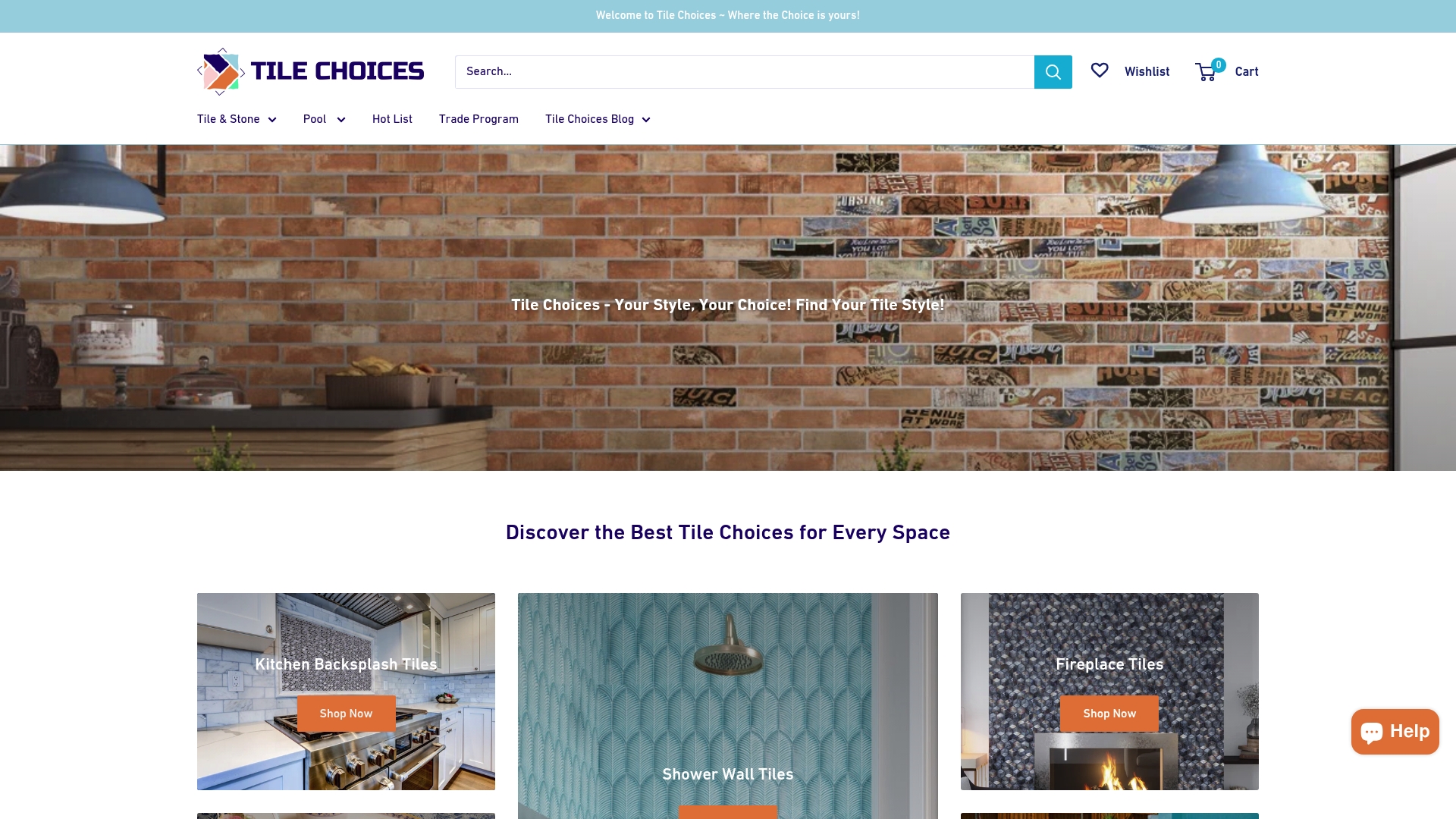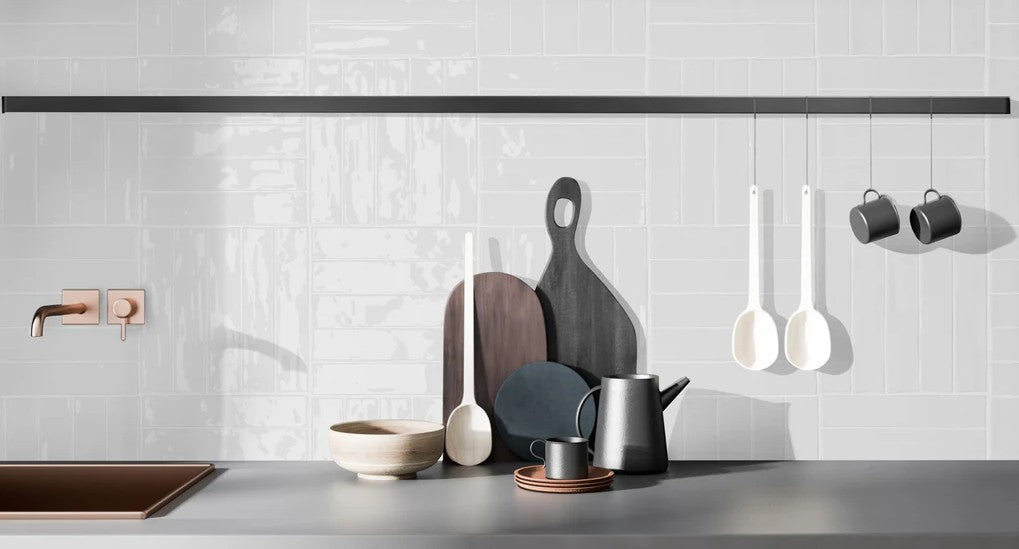Home improvement projects promise a fresh new feel and a boost in property value. In fact, well-executed landscaping alone can increase your home’s value by up to 12 percent according to the National Association of Realtors. Most people think you need deep pockets or professional skills to make a real difference at home. The truth is, smart planning and a few key DIY strategies can help anyone transform their space without breaking the bank.
Table of Contents
- 1: Start With A Clear Plan And Budget
- 2: Choose The Right Tools For The Job
- 3: Focus On Energy Efficiency Upgrades
- 4: Learn Basic Plumbing Skills
- 5: Refresh Walls With Paint Or Wallpaper
- 6: Update Fixtures For A Modern Look
- 7: Incorporate Smart Home Technology
- 8: Improve Curb Appeal With Landscaping
- 9: Optimize Space With Smart Storage Solutions
- 10: Always Follow Safety Guidelines
Quick Summary
| Takeaway | Explanation |
|---|---|
| Start with a detailed plan and budget | A comprehensive plan ensures resource allocation and prevents overspending on unexpected issues. |
| Invest in quality tools for better results | Using the right tools improves efficiency and the quality of work in home improvement projects. |
| Prioritize energy efficiency upgrades | Energy-saving improvements can lead to substantial utility savings and enhance home value. |
| Learn basic plumbing skills for savings | Mastering simple plumbing tasks can prevent costly repairs and minimize damage risks in your home. |
| Follow safety guidelines to prevent accidents | Adhering to safety measures significantly reduces injury risks during home improvement projects. |
1: Start with a Clear Plan and Budget
Successful home improvement projects begin with strategic planning and financial preparation. Developing a comprehensive roadmap transforms random renovations into purposeful upgrades that enhance your living space and property value. Before picking up a single tool or purchasing materials, homeowners must invest time in meticulous project planning.
Begin by conducting a thorough assessment of your current space and identifying specific improvement goals. This initial evaluation helps you understand the scope of work and potential challenges. According to HomeAdvisor’s True Cost Guide, comprehensive home improvement planning can save homeowners up to 20% on overall project expenses by preventing unexpected complications and unnecessary purchases.
Key considerations for effective project planning include:
- Realistic timeline development
- Precise budget allocation
- Skill level assessment
- Material and tool requirements
Financial preparation is equally critical. Create a detailed budget that includes not just material costs, but also potential contingency funds for unexpected expenses. Most experts recommend reserving 10-20% of your total budget for unforeseen issues that might emerge during renovation.
To maximize your planning effectiveness, research local building codes, understand permit requirements, and assess whether specific improvements require professional expertise. Some complex projects might seem straightforward but could demand specialized skills or equipment.
Utilize digital tools and spreadsheets to track expenses, create visual project timelines, and maintain organized documentation. Breaking down your home improvement project into manageable phases helps prevent overwhelming complexity and ensures steady, methodical progress.
Remember that thorough planning is the foundation of any successful home improvement endeavor. By investing time upfront to strategize, budget, and prepare, you significantly increase your chances of achieving a smooth, cost-effective, and satisfying renovation experience.
2: Choose the Right Tools for the Job
Selecting appropriate tools is crucial for successful DIY home improvement projects. Professional-grade equipment can transform amateur efforts into polished, high-quality results. The right tools not only make tasks easier but also ensure precision, safety, and efficiency.
According to Popular Mechanics, investing in quality tools can significantly reduce project completion time and minimize potential errors. While professional-grade equipment might seem expensive initially, they provide long-term value and superior performance.
Essential tools every DIY enthusiast should consider include:
- Cordless drill with multiple drill bit sets
- Sturdy ladder with safety features
- Comprehensive measurement tools
- High-quality safety equipment
Before purchasing tools, assess your skill level and project requirements. Multipurpose tools can be excellent investments, offering versatility across different home improvement tasks. For specialized projects like tile work, you might need specific equipment. For instance, learn more about ceramic tile cutting techniques to understand the precise tools required.
Consider tool rental for expensive or infrequently used equipment. Many home improvement centers offer professional-grade tools at reasonable daily rates, allowing access to high-end equipment without substantial upfront investment.
Prioritize tool quality over quantity. A few well-chosen, durable tools will serve you better than a collection of cheap, unreliable alternatives. Look for ergonomic designs, reputable brand warranties, and positive user reviews when making selections.
Safety should always be your primary concern. Protective gear like safety glasses, work gloves, ear protection, and dust masks are non-negotiable accessories for any serious DIY enthusiast. Invest in comfortable, well-fitting safety equipment that doesn’t compromise your ability to work effectively.
By carefully selecting the right tools and prioritizing both performance and safety, you set the foundation for successful home improvement projects that deliver professional-quality results.
3: Focus on Energy Efficiency Upgrades
Energy efficiency upgrades represent smart home improvement strategies that simultaneously reduce utility costs and minimize environmental impact. Modern homeowners recognize that strategic investments in energy-saving technologies can yield substantial long-term financial and ecological benefits.
According to Energy.gov, comprehensive energy efficiency improvements can reduce household energy consumption by up to 30%, translating into significant annual savings.
Key areas for energy efficiency upgrades include:
- Improved insulation systems
- High-efficiency windows and doors
- Smart home temperature control
- LED lighting solutions
Thermal performance is critical in energy conservation. Upgrading insulation in walls, attics, and crawl spaces creates robust barriers against heat transfer, maintaining comfortable indoor temperatures while reducing heating and cooling expenses. Modern insulation materials offer superior protection compared to traditional options.
Window replacements provide another powerful strategy. Energy-efficient windows with double or triple-pane designs, low-emissivity coatings, and proper sealing can dramatically reduce heat gain during summer and heat loss during winter. These upgrades not only lower energy bills but also enhance overall home comfort.
Smart home technologies enable precise energy management. Programmable thermostats, motion-activated lighting systems, and energy monitoring devices allow homeowners to track and optimize their energy consumption in real-time. These technologies provide granular control over household energy use, identifying potential waste and suggesting optimization strategies.
Consider appliance upgrades that carry Energy Star certification. These products undergo rigorous testing to ensure maximum energy efficiency. From refrigerators to washing machines, selecting energy-efficient models contributes to reduced electricity consumption and lower utility expenses.
Beyond financial benefits, energy efficiency upgrades contribute to environmental sustainability. By reducing overall energy demand, homeowners play a crucial role in mitigating carbon emissions and supporting global conservation efforts.
Strategic energy efficiency improvements represent intelligent home investments that deliver immediate comfort and long-term economic and environmental advantages.
4: Learn Basic Plumbing Skills
Basic plumbing skills can save homeowners significant money and prevent potential water damage emergencies. Understanding fundamental plumbing techniques empowers DIY enthusiasts to handle minor repairs and maintenance tasks confidently and effectively.
According to The Spruce, developing basic plumbing knowledge can help prevent costly professional interventions and potential home damage.
Critical plumbing skills every homeowner should master include:
- Shutting off main water supply
- Identifying pipe materials
- Basic leak detection
- Understanding drainage systems
Safety always comes first when working with plumbing systems. Before attempting any repairs, ensure you understand the specific requirements of your home’s unique infrastructure. Invest in proper protective gear like safety glasses, gloves, and appropriate tools designed for plumbing work.
Learn to recognize different pipe types and their specific characteristics. Copper, PVC, and PEX pipes each require unique handling techniques. Understanding their properties helps you select appropriate repair methods and materials.
Mastering basic tool usage is crucial. Pipe wrenches, plumber’s tape, adjustable spanners, and pipe cutters are essential equipment for handling minor plumbing tasks. Practice using these tools on simple projects to build confidence and skill.
Focus on preventative maintenance techniques. Regularly inspect exposed pipes for signs of corrosion, leaks, or potential stress points. Clean drain screens, check water pressure, and monitor potential problem areas in your home’s plumbing system.
Know when to call a professional. While basic skills are valuable, complex issues involving main water lines, sewage systems, or significant structural modifications require expert intervention. Recognize the boundaries of your expertise to prevent potentially expensive mistakes.
Consider taking local workshops or online courses that provide hands-on plumbing skill training. Many community colleges and hardware stores offer affordable classes designed specifically for homeowners seeking practical knowledge.
By developing fundamental plumbing skills, you transform from a passive homeowner to an active maintenance professional, protecting your property and reducing long-term repair expenses.
5: Refresh Walls with Paint or Wallpaper
Wall treatments offer transformative opportunities to revitalize living spaces, dramatically changing room aesthetics with minimal investment. Whether choosing paint or wallpaper, homeowners can dramatically enhance interior environments through strategic design choices.
According to HGTV, selecting the right wall treatment can increase perceived home value and create compelling visual narratives within interior spaces.
Key considerations for successful wall transformations include:
- Surface preparation techniques
- Color and pattern selection
- Appropriate tool acquisition
- Proper application methods
Paint selection requires careful contemplation. Modern paint technologies offer durability, washability, and diverse finish options ranging from matte to high-gloss. Consider room-specific requirements such as moisture resistance for bathrooms or scrubbable surfaces for high-traffic areas.
When painting, invest time in thorough surface preparation. Proper priming creates smooth foundations that ensure professional-looking results. Clean walls, repair minor imperfections, and use painter’s tape to protect adjacent surfaces. Quality brushes and rollers significantly impact final appearance.
Wallpaper presents another compelling design avenue. Contemporary wallpaper options include peel-and-stick varieties that simplify application and removal. These modern solutions allow renters and homeowners alike to experiment with bold designs without permanent commitment.
Color psychology plays a crucial role in wall treatments. Cool tones like blues and greens create calming environments, while warm colors like yellows and oranges generate energetic atmospheres. Select colors that complement existing furniture and reflect intended room functionality.
For DIY enthusiasts, practice techniques on smaller surfaces or sample boards before committing to entire rooms. This approach helps refine skills and test color interactions without risking comprehensive project failure.
Remember that lighting dramatically influences perceived wall colors. Test paint swatches under different lighting conditions to ensure desired aesthetic outcomes. Natural and artificial light can significantly alter color appearance throughout different times of day.
Whether choosing paint or wallpaper, thoughtful wall treatments represent powerful methods of personal expression and home improvement.
6: Update Fixtures for a Modern Look
Fixture updates represent cost-effective strategies for transforming living spaces, instantly elevating home aesthetics without extensive renovations. Modern fixtures serve as functional art pieces that reflect contemporary design sensibilities and personal style preferences.
According to Houzz, strategic fixture replacements can dramatically enhance a room’s visual appeal and functionality with minimal investment.
Key areas for fixture modernization include:
- Kitchen hardware
- Bathroom lighting
- Cabinet handles
- Door knobs and hinges
Lighting fixtures play a particularly crucial role in home design. Contemporary LED options offer energy efficiency, design flexibility, and enhanced ambiance control. Consider mixing tile patterns to complement your lighting choices for a cohesive design approach.
Metallic finishes have gained significant popularity in modern fixture design. Matte black, brushed nickel, and brass create sophisticated visual statements. When selecting fixtures, maintain consistency in finish across different room elements to create a unified design language.
Kitchen and bathroom fixtures offer prime opportunities for transformation. Replacing outdated faucets, showerheads, and cabinet hardware can instantly modernize these critical spaces. Select fixtures that balance aesthetic appeal with practical functionality, considering factors like water efficiency and ease of cleaning.
Electrical fixtures provide another avenue for design innovation. Smart switches, motion-activated lighting, and programmable dimmer controls represent cutting-edge home improvement techniques that combine technological sophistication with energy efficiency.
Remember that fixture selection should complement existing architectural elements and color schemes. Avoid trendy designs that might quickly become dated. Instead, opt for timeless styles with subtle contemporary touches that will maintain their appeal over time.
By thoughtfully selecting and updating fixtures, homeowners can achieve significant visual transformations with minimal time and financial investment, breathing new life into living spaces.
7: Incorporate Smart Home Technology
Smart home technology represents a revolutionary approach to home management, offering unprecedented convenience, efficiency, and control. Modern homeowners can transform living spaces into intelligent, responsive environments that adapt to individual preferences and lifestyle needs.
According to Statista, the global smart home market is projected to reach substantial growth, indicating increasing consumer adoption and technological innovation.
Essential smart home technology categories include:
- Security systems
- Energy management devices
- Voice-activated assistants
- Automated lighting controls
Wireless connectivity forms the backbone of smart home ecosystems. Devices like smart thermostats, security cameras, and automated door locks can now communicate seamlessly, creating integrated home management systems. These technologies enable remote monitoring and control through smartphone applications.
Energy efficiency remains a primary benefit of smart home technology. Intelligent thermostats learn household temperature preferences, automatically adjusting settings to optimize comfort while reducing energy consumption. Motion sensors can trigger lighting and climate control, eliminating unnecessary power usage.
Security represents another critical domain for smart technology integration. Advanced systems offer real-time monitoring, mobile alerts, and remote access capabilities. Cameras with facial recognition, smart doorbell systems, and automated locks provide comprehensive home protection strategies.
Consider compatibility when selecting smart home devices. Look for systems supporting universal protocols like Z-Wave or Zigbee, which ensure seamless communication between different brand technologies. Start with foundational devices and gradually expand your smart home infrastructure.
Privacy considerations are paramount. Research device manufacturers’ data protection policies and select products from reputable brands committed to robust cybersecurity practices. Configure privacy settings carefully and regularly update device firmware to maintain security.
Budget-conscious homeowners can implement smart technologies incrementally. Many affordable options provide significant functionality without requiring comprehensive system overhauls. Start with key areas like lighting, temperature control, or security to build your smart home foundation.
Smart home technology transforms living spaces into responsive, efficient environments that anticipate and address residents’ needs with unprecedented precision and convenience.
8: Improve Curb Appeal with Landscaping
Landscaping transforms outdoor spaces from mundane environments into visually compelling extensions of your home. Strategic landscape design not only enhances aesthetic appeal but also increases property value and creates functional outdoor living areas.
According to National Association of Realtors, well-executed landscaping can increase property values by up to 12% compared to homes with minimal exterior treatments.
Critical landscaping considerations include:
- Native plant selection
- Water conservation techniques
- Seasonal maintenance planning
- Hardscaping elements
Native plant choices offer sustainable landscaping solutions. Indigenous plants require less water, minimal maintenance, and provide natural habitats for local wildlife. Research regional plant species that thrive in your specific climate conditions, ensuring long-term landscape success.
Water management represents a crucial landscaping strategy. Drought-resistant plantings and efficient irrigation systems reduce water consumption while maintaining attractive outdoor spaces. Consider xeriscaping principles that minimize water requirements through intelligent plant and design selections.
Hardscaping elements like pathways, retaining walls, and decorative stones create structural interest and functional outdoor spaces. These features provide visual contrast to green elements and define distinct landscape zones. Integrate materials that complement your home’s architectural style for a cohesive design approach.
Seasonal planning ensures year-round landscape vitality. Select plants with varying bloom times and incorporate evergreen elements to maintain visual interest during different seasons. Perennial selections provide recurring beauty with minimal annual replanting efforts.
Maintain a balanced approach between aesthetic appeal and practical functionality. Consider factors like sunlight exposure, soil conditions, and maintenance requirements when designing landscape layouts. Create multi-functional spaces that serve recreational and visual purposes.
Budget-conscious homeowners can implement landscaping improvements incrementally. Start with foundational elements like soil preparation and basic plantings, gradually expanding design complexity as resources allow. Prioritize projects that offer immediate visual impact and long-term sustainability.
Thoughtful landscaping transforms exterior spaces into dynamic, living environments that reflect personal style while enhancing overall property aesthetics and value.
9: Optimize Space with Smart Storage Solutions
Smart storage solutions transform cluttered living spaces into organized, functional environments that maximize available square footage. Innovative design strategies enable homeowners to create efficient storage systems that enhance both aesthetic appeal and practical utility.
According to National Association of Home Builders, storage optimization ranks among the top priorities for modern homeowners seeking improved living spaces.
Key storage optimization strategies include:
- Vertical space utilization
- Multi-functional furniture
- Custom built-in solutions
- Modular storage systems
Vertical storage represents a game-changing approach to space management. Wall-mounted shelving, floor-to-ceiling cabinets, and overhead storage units capture previously unused areas, transforming bare walls into productive organizational zones. Utilize lightweight, sturdy materials like metal brackets and floating shelves to create visually appealing storage solutions.
Multi-functional furniture offers exceptional space-saving potential. Ottoman designs with interior storage, beds featuring integrated drawers, and expandable dining tables provide dual-purpose solutions that minimize clutter while maximizing room functionality. Select pieces that seamlessly blend aesthetic appeal with practical storage capabilities.
Custom built-in solutions allow precise tailoring to specific space requirements. Assess awkward corners, under-stair areas, and alcoves as potential storage opportunities. Install custom cabinetry, pull-out drawers, and specialized organizational systems that transform previously unused spaces into efficient storage zones.
Modular storage systems provide flexibility for evolving household needs. Adjustable shelving units, stackable containers, and reconfigurable storage blocks enable homeowners to adapt organizational strategies as living requirements change. Choose systems with clean, contemporary designs that complement existing interior aesthetics.
Technology integration can further enhance storage efficiency. Smart storage solutions now incorporate features like inventory tracking, climate control, and digital organization tools. Consider storage systems with built-in charging stations, humidity control, and mobile app connectivity for advanced organizational capabilities.
Budget-conscious approaches include repurposing existing furniture, utilizing affordable organizational accessories, and implementing DIY storage modifications. Start with high-impact, low-cost solutions that immediately reduce visual clutter and improve spatial efficiency.
Effective storage optimization transforms living spaces, creating harmonious environments that support streamlined, stress-free lifestyles.
Below is a comprehensive table summarizing the main DIY home improvement tips, benefits, and outcomes discussed throughout the article.
| Tip/Strategy | Key Points & Actions | Benefits/Outcomes |
|---|---|---|
| Plan & Budget | Assess needs, set clear goals, develop timelines, allocate funds, plan for contingencies, research codes and permits | Prevents overspending, ensures smooth progress, maximizes resources, reduces surprises |
| Right Tools & Safety Gear | Invest in quality tools, consider rentals, match tools to project scope, prioritize safety equipment | Improves work quality, efficiency, and personal safety |
| Energy Efficiency Upgrades | Upgrade insulation, windows, lighting; use smart thermostats and Energy Star appliances | Lowers energy bills, boosts comfort and home value, supports sustainability |
| Basic Plumbing Skills | Learn shutoff techniques, identify pipes, detect leaks, maintain systems, use proper tools | Saves on repairs, minimizes damage risk, empowers self-reliance |
| Paint & Wall Treatments | Prep surfaces, choose appropriate finishes or wallpapers, test colors under lighting, practice on small areas | Dramatic visual refresh, adds value, personalizes spaces |
| Update Fixtures | Replace lighting, cabinet hardware, faucets, select modern or timeless styles, maintain finish consistency | Quick room update, modernized look, improved function |
| Smart Home Technology | Install security systems, energy devices, voice assistants, automated controls; ensure device compatibility, follow privacy best practices | Greater convenience, enhanced security, optimized energy use |
| Landscaping & Curb Appeal | Use native plants, efficient watering, hardscaping, seasonal strategies, phase improvements for budget | Boosts property value, outdoor enjoyment, sustainable design |
| Smart Storage Solutions | Use vertical/hard-to-reach spaces, multifunctional furniture, custom built-ins, modular systems | Reduces clutter, maximizes usable space, improves organization |
| Follow Safety Guidelines | Wear PPE, maintain tools, prep workspace, plan for emergencies, know personal limits | Significantly reduces accidents, ensures legal compliance, protects people and property |
10: Always Follow Safety Guidelines
Safety guidelines form the critical foundation of any successful home improvement project, protecting both DIY enthusiasts and their living environments from potential risks and accidents. Comprehensive safety awareness transforms amateur renovations into responsible, professional-grade interventions.
According to Occupational Safety and Health Administration, adhering to proper safety protocols can reduce home improvement accident rates by up to 75%.
Critical safety preparation elements include:
- Personal protective equipment
- Tool maintenance protocols
- Workspace preparation
- Emergency preparedness
Personal protective equipment represents the first line of defense during home improvement projects. Invest in high-quality safety gear including impact-resistant safety glasses, heavy-duty work gloves, respiratory masks, and steel-toed boots. Each project demands specific protective requirements, so assess individual task risks before beginning work.
Properly maintained tools significantly reduce accident potential. Inspect equipment regularly for signs of wear, damage, or malfunction. Keep cutting tools sharp, electrical equipment properly grounded, and store all tools in designated, secure locations away from children and unauthorized users.
Workspace preparation involves creating controlled, organized environments that minimize potential hazards. Clear work areas of unnecessary clutter, ensure adequate lighting, maintain proper ventilation, and establish designated safe zones for tool storage and material staging. Use sturdy, level work surfaces and secure temporary work platforms with appropriate safety restraints.
Emergency preparedness is non-negotiable. Maintain easily accessible first aid kits, know basic medical response techniques, and keep emergency contact information prominently displayed. Understand the location of primary utility shut-offs for electricity, water, and gas to enable rapid response during potential accidents.
Additional safety considerations include understanding local building codes, obtaining necessary permits, and recognizing personal skill limitations. Do not hesitate to consult or hire professionals for complex projects that exceed your expertise. Overconfidence represents one of the most significant safety risks in home improvement.
Electrical and structural work demand heightened caution. Always confirm power disconnection before working on electrical systems, use proper grounding techniques, and wear non-conductive protective equipment. When working on structural modifications, understand load-bearing considerations and potential building integrity implications.
Safety is not an optional consideration but a fundamental requirement in responsible home improvement. Prioritize personal well-being through informed, cautious, and methodical approaches to every project.
Transform Your Home With Premium Tile Solutions
You have learned smart DIY methods for better living spaces, from planning every detail to upgrading fixtures and finishing with perfect wall treatments. One challenge you might face is choosing building materials that not only look stunning but also last for years in busy parts of your home. When it comes to refreshing your walls, floors, or backsplashes—especially after reading tips about mixing tile patterns and mastering clean installations—selecting the right tile can feel overwhelming. You want reliability, style, and clarity at every step.

Why wait to start your next amazing project? Discover a world of high-quality tiles at TileChoices.com where you get expert support, rich inspiration, and all the guidance you saw mentioned in our DIY article. See our educational blog for tips on special techniques like ceramic tile cutting. Dive into curated collections and order samples right to your door. Refresh your home with the exact finish you imagined—visit TileChoices.com and turn your next improvement idea into reality today.
Frequently Asked Questions
What are some essential tools needed for DIY home improvement projects?
To ensure success in DIY home improvement projects, essential tools include a cordless drill, measuring tools, a sturdy ladder, and high-quality safety equipment like gloves and safety glasses. Investing in professional-grade tools is also recommended for better efficiency and quality results.
How can I improve the energy efficiency of my home?
To enhance energy efficiency, consider upgrading insulation, installing energy-efficient windows, utilizing smart thermostats, and switching to LED lighting. Implementing these upgrades can significantly reduce energy consumption and lower utility bills over time.
What basic plumbing skills should every homeowner master?
Key plumbing skills include knowing how to shut off the main water supply, identifying pipe materials, detecting leaks, and understanding basic drainage systems. Mastering these skills can save money on repairs and prevent potential water damage.
How can I update my home fixtures for a modern look?
Updating home fixtures can be achieved by replacing kitchen hardware, bathroom lighting, and cabinet handles with contemporary designs. Consider using finishes like matte black or brushed nickel to create a cohesive and stylish aesthetic throughout your space.









